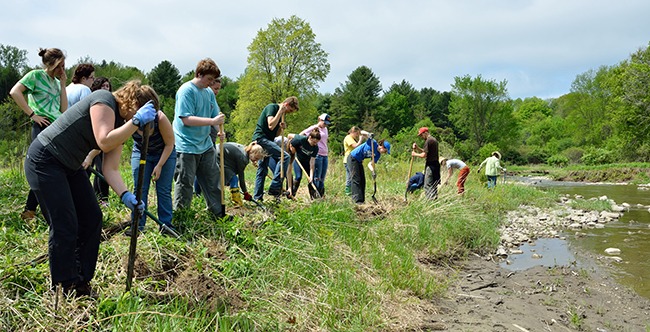Protecting the Water Quality of Lake Champlain through Permanent Land Conservation and Stewardship!
While others are addressing portions of the water quality issue, ultimately the long-term health and resilience of Lake Champlain will depend on increasing people’s personal connection to the Lake and the surrounding landscape. Our 23 miles of protected shorelands along Lake Champlain and its major rivers model ideal land use and “buffer” the Lake, while protecting essential wildlife habitat. Our protected lands include sensitive and unique habitats, and their permanent conservation prevents erosion, excess fertilizers, and other direct negative impacts to the Lake.
We know our work to create visual and tangible demonstration areas, hosting tree planting workdays, and creating model green infrastructure areas like rain gardens, will increase the conservation and stewardship ethic our region needs to protect Lake Champlain’s water quality in the long-term. We also know that to protect water quality, we must protect the land through which water flows on its way to Lake Champlain. Our Mill River Falls Natural Area in Georgia, Vermont (pictured above) is a great example of the power of permanent land conservation. This 35-acre gem protects critical river buffers, wetlands, and floodplain forests that absorb excess sediment and pollutants that would otherwise wash into Lake Champlain.
The Problem
Parts of Lake Champlain still struggle with a significant water quality challenge, a problem that has been compounded (and will continue) by recent extreme storms in combination with high fertilizer inputs from area residents and communities. And as the countryside of the Champlain Valley is converted from working farms and forests to residential use, the Lake suffers from hundreds of small land use changes adding up to serious water quality issues. High levels of sediments and nutrients, particularly phosphorous, have caused blue-green algae blooms in the lake, threatening the health of the humans, pets, and wildlife.
How You Can Help
1) Plant Trees – Mature trees absorb tens of thousands of gallons of rainfall and spring melt, protecting your land and your lake. Planting vegetation in buffer areas is a great way to reduce sediment and nutrient flow into nearby waterways.
2) Walk Your Water Flow! – Does your roof drain right into a local stream? Could you redirect your driveway flow into a beautiful rain garden? For more information, contact us via or 802-862-4150.
3) Join the Lake Champlain Land Trust – Your membership helps us to create targeted demonstration areas in key spots within the watershed. Donate Now!
4) Volunteer – Join our fun tree planting workdays and protect the lake. See our Volunteer Page.
5) Conserve Your Land – Permanent land conservation tools provide permanent water quality solutions. Learn about Conservation Options.
Water Quality Improvement Options for Landowners
Landowners want to help protect their beloved lake. Some are not always sure how to protect the lake — what investment of trees will do the most good or which trees to pick from the dozens of choices at the local nursery. Other landowners have chosen to permanently conserve their land to protect the Lake’s water quality. As we consult with landowners about conservation tools to protect their family land, we also offer tips on ecologically sensitive landscaping and other land management techniques that can improve water quality.
A number of landowners have asked us to evaluate the drainage and flooding issues. We often discover that there are lake-friendly landscaping and management options available. We are hoping to increase our capacity to reach more landowners, but we need your help to do so. Click to Donate
We also continue to offer landowners tips to protect their homes, yards, and landscaping through our print newsletters. To subscribe, please email us at with your mailing address.
Upper La Platte River Natural Area Case Study
We are now in the stewardship phase of a major 1,600+ tree restoration project at the Upper La Platte River Natural Area. Our goal is to restore flood-absorbing floodplain forests that formerly helped absorb sediments and phosphorous just before the La Platte River flowed into Lake Champlain’s Shelburne Bay. In the near-term, our restored forest will serve as a demonstration area complete with a series of educational signs helping landowners select and plant trees on their land. Click here for more information about this exciting project.

We believe strongly that our work to create visual and tangible water quality improvement will help encourage a strong and lasting conservation and stewardship ethic in the Champlain Valley, thus resulting in near- and long-term water quality benefits.

